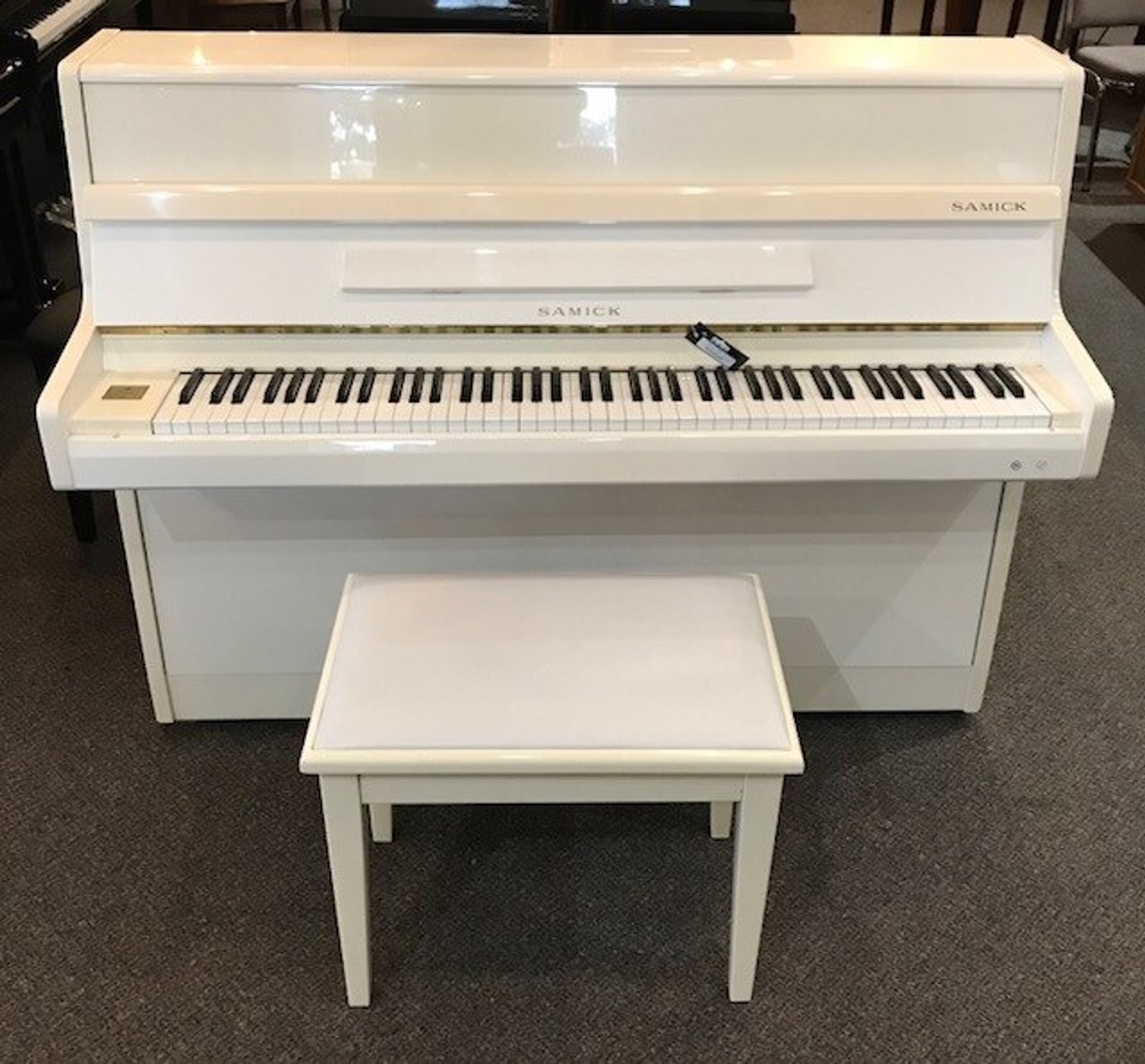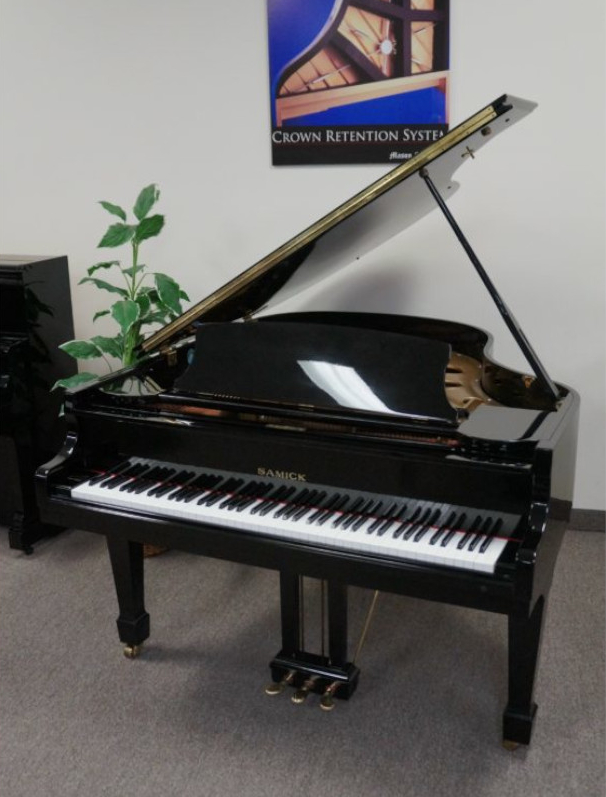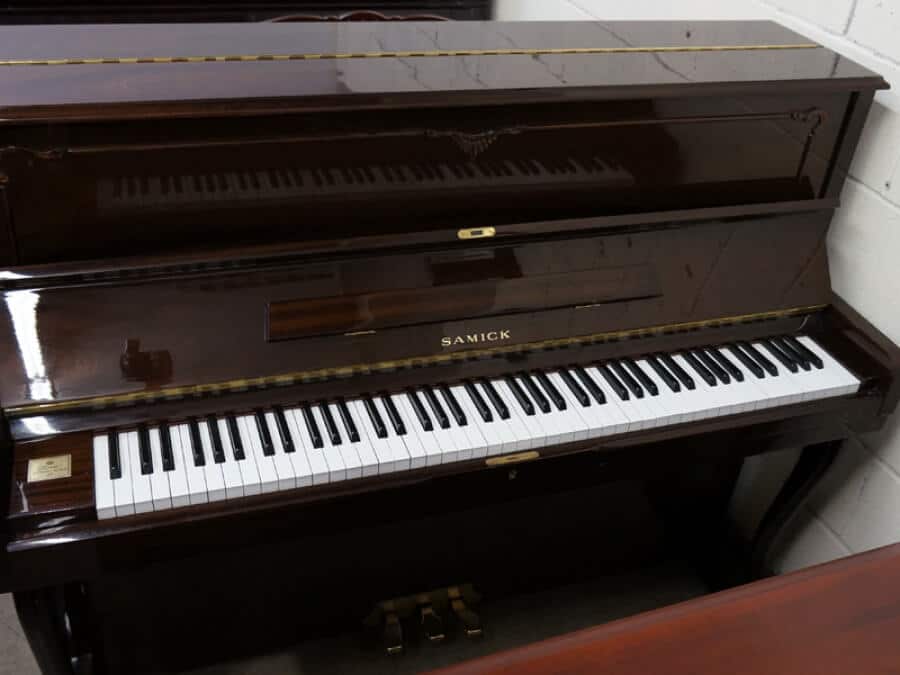
They are ambitious and have built up the reputation to back that ambition. So far the company shows no sign of ceasing their growth. In 2007 the construction of a new corporate headquarters was completed in Tennessee. In 1992, Samick built another factory in Indonesia. Since its foundation the company has done nothing but expand. Samick has also has made several guitars. They focus on creating their mainly pianos to help boost their name and to create the perfect instrument. They were founded in 1958 and quickly became one of the world’s largest piano manufacturers. Warranty: 10 years, parts and labor, transferable to future owners within the warranty period.Samick is a younger piano company than some of the ones that you will find on our directory. Knabe, and Seiler - have met with very positive response. The musical design and performance of Samick’s upper-level pianos - J.P. Many of Samick’s Indonesian pianos are priced similarly to low-cost pianos from China. Climate control in the tropically situated Indonesian factory, and issues of action geometry, are also among the areas that have seen improvement. The company says that new CNC machinery installed in 2007 has revolutionized the consistency and accuracy of its manufacturing. Quality control in Samick’s South Korean and Indonesian factories has steadily improved over the years, and the Indonesian product is said to be almost as good as the Korean.
#Samick piano review crack
Tonally, it behaves much like a solid spruce soundboard, but won’t crack or lose its crown. With Klaus Fenner’s technical advice, Samick pioneered the use of this soundboard in early 1980, and it is now used by others as well.

Most Samicks also have veneer-laminated soundboards, which the company calls a “surface tension” soundboard - essentially, a solid spruce soundboard sandwiched by two very thin veneers. In the 1980s Klaus Fenner, a German piano designer, was hired to revise the Samick scale designs to make the pianos sound more “European.” Most Samick pianos now being made are based on these designs. SMC has a warehouse and office facility in Tennessee, at which it uncrates, inspects, tunes, regulates, and voices its upper-level pianos before shipping them to dealers. Pramberger instruments are still made in South Korea. (For historical information about the original Kohler & Campbell piano company, see The Piano Book.) Most Samick-made pianos destined for the U.S. The Kohler & Campbell line has been discontinued in North America but is still sold elsewhere. Samick no longer distributes pianos under the names Bernhard Steiner, Conover Cable, Hazelton Bros., Remington, or Sohmer & Co.

Knabe, and Seiler pianos in North America (see separate listings for Wm. Samick Music Corporation (SMC), the North American sales and marketing arm of the Korean company, distributes Samick, Pramberger, Wm. The company says that “Samick” means “three benefits” in Korean, symbolizing the management’s wish that the activities of the company benefit not only the company itself, but also its customers and the Korean economy. The Asian economic crisis of the late 1990s forced Samick into bankruptcy, from which the company emerged in 2002 it is now on a sound financial footing.

Over the next several decades, Samick expanded into manufacturing guitars and other instruments and opened factories in China and Indonesia, where it shifted much of its production as Korean wages rose. As South Korea’s economy improved, Lee expanded his operation, and in 1964 began exporting to other parts of the world, eventually becoming one of the world’s largest piano manufacturers, now making most parts in-house. Facing an immense challenge in an impoverished and war-torn country, in the early 1960s, using largely imported parts, Lee began to build and sell a very limited quantity of vertical pianos. In 1958, in South Korea, Hyo Ick Lee founded Samick as a Baldwin distributor. Ltd., Inchon, South Korea and Bogor, West Java, Indonesia

Pianos made by: Samick Musical Instrument Mfg.


 0 kommentar(er)
0 kommentar(er)
